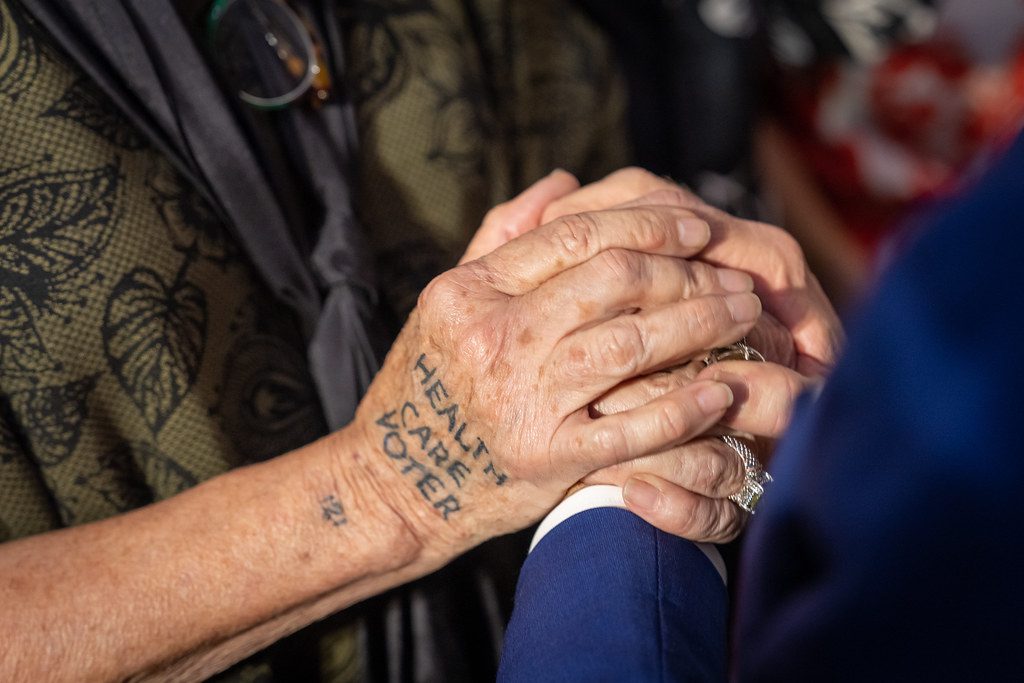By Ava Kofman
This story was originally published by ProPublica. ProPublica is a Pulitzer Prize-winning investigative newsroom. Sign up for The Big Story newsletter to receive stories like this one in your inbox.
Series: The Hospice Hustle: How a Visionary Movement Became a Plaything for Profiteers
Easy money and a lack of regulation have transformed a crusade to provide death with dignity into a $22 billion industry rife with fraud, abuse and exploitation.
The year 2023 was a banner one for hospice reform. Spurred by media reports, letters from Congress and pressure from lobbying groups, the Centers for Medicare and Medicaid Services increased oversight of end-of-life care. It retooled inspections to focus on quality of care. It made ownership data public for the first time. And, kicking off a plan to visit every hospice provider in the country, its staff made appearances at 7000 sites. Following the tour, the Medicare billing privileges for 46 nonoperational hospices were revoked.
In July, the agency also rolled out a special enforcement program to target hospices in Arizona, California, Nevada and Texas — states with alarming spikes in the number of providers. The increase in hospice numbers had raised concerns inside and outside the agency about fraudulent bills for unneeded services and market oversaturation. During its “period of enhanced oversight,” the agency said, it would scrutinize the claims from new hospices in these states before paying them.
These reforms, however, have done little to slow the region’s hospice boom. CMS data from last year shows that these four states continued to drive most of the growth of new Medicare-certified hospices in the country, with two-thirds of all certifications taking place there. The nation’s leading trade groups for end-of-life care have repeatedly recommended that Medicare impose a moratorium on certifying new hospices in counties that have seen an explosion in questionable startups. This would prevent bad actors from draining Medicare funds, the groups contend, while regulators can investigate fraudulent networks. In response to questions about this recommendation, CMS told ProPublica in a written statement that “if state officials believe there is a hospice issue in their state, they can pursue a state-based hospice license moratorium under their state laws/regulations such as what was done in California.”
California, however, offers an example of why this approach may not be working: Last year, the state temporarily banned new hospice licenses altogether after its auditors found evidence of “a large-scale, targeted effort to defraud Medicare,” with providers charging for patients who did not need hospice care or, in some cases, did not exist. But without a federal moratorium on certifications, the large crop of licensees that were established in the past three years can continue to bill Medicare. “The Department of Public Health is doing a fantastic job of trying to clean it up here in California, but they can’t clean it up fast enough if CMS keeps allowing new hospices to charge for patients,” said Sheila Clark, the president of the California Hospice and Palliative Care Association, a trade group for providers.
Indeed, the agency’s data shows that last year it continued to certify hospices located in buildings that have been flagged by auditors and journalists as potential fraud hot spots. In 2023, Medicare certified 15 more hospices at a two-story building in Los Angeles that is home to more than 100 hospices. It also certified three new hospices last year at a Phoenix address that purportedly houses dozens of providers, all of which have materialized in the past two years.
CMS said that without “evidence of sanctions” that would authorize it to deny certification, the agency cannot prevent these hospices from entering the program. In a recent blog post it added that “we take our role as stewards of the Medicare Trust Funds seriously, and we work to ensure that taxpayer dollars are spent on high-quality, necessary care for each beneficiary.”
Hospice fraud doesn’t just drain Medicare reserves. It also harms patients who are not actually dying, since enrollment cuts them off from curative care. Karen Joy Fletcher, communications director at California Senior Medicare Patrol, which runs a hotline for patients and families, said that hospice fraud continues to be a big problem in the state despite the moratorium.
A few weeks ago, for instance, the hotline received a call from Anna Duran, whose mother has been in a nursing home in Los Angeles County since 2010. Duran was surprised to discover that her mother was unable to get her pacemaker checked because she’d recently been enrolled in hospice by a doctor she’d never heard of. Duran, who holds power of attorney for her mother, determined that no one at the nursing home had enrolled her mother — or thought, for that matter, that she was about to die. She had dementia and high blood pressure, but she was still walking. Each time Duran called the number for the hospice business, no one picked up. An analyst from Medicare has now been assigned to untangle the case, but so long as Duran’s mother is still on hospice, she no longer qualifies for her regular physical therapy appointments. Medicare, meanwhile, has paid the hospice more than $7,500. “Nobody knows how this happened,” Duran said.
ProPublica is a Pulitzer Prize-winning investigative newsroom. Sign up for The Big Story newsletter to receive stories like this one in your inbox. Republished with Creative Commons License (CC BY-NC-ND 3.0).







